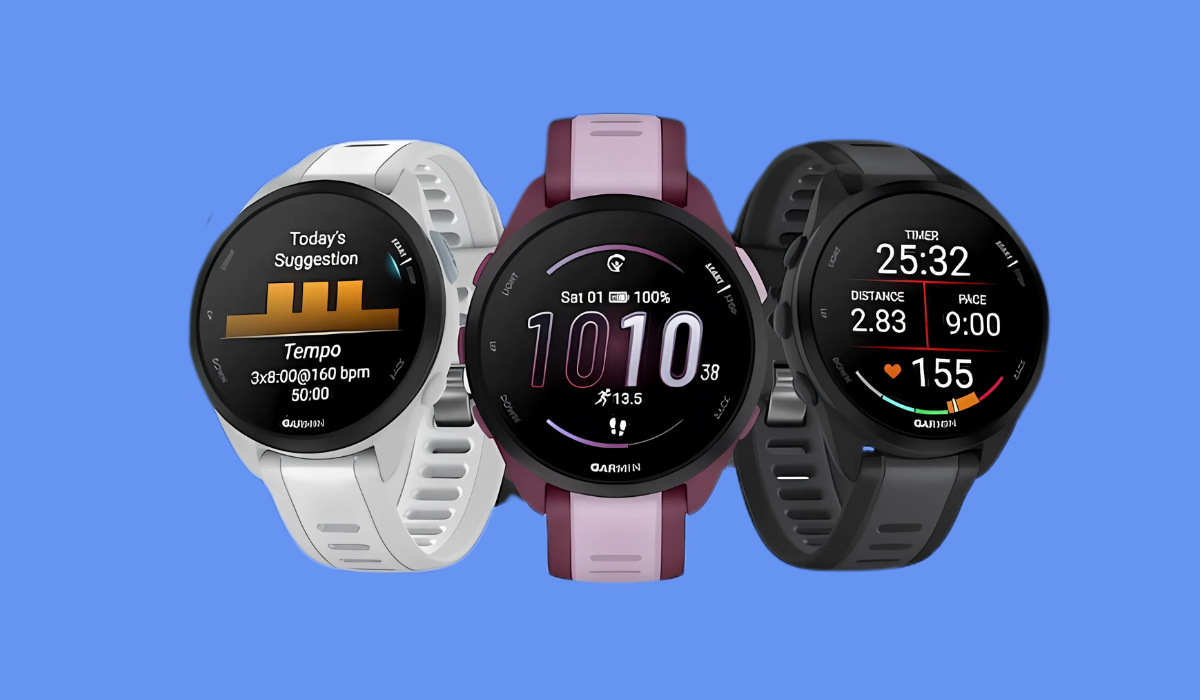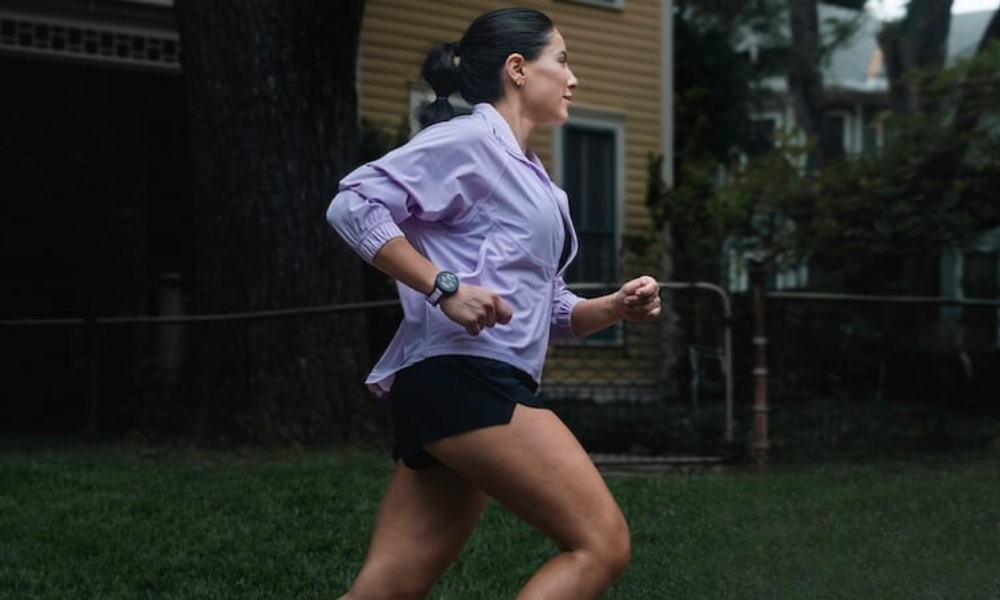Is the Garmin Forerunner 165 the Best Budget Running Watch of 2024?

November 8, 2024

The Garmin Forerunner 165 is Garmin’s latest addition to its Forerunner lineup, positioned as an entry-level model with impressive value. Priced at £230/€275ish for the standard version, this watch is aimed primarily at runners, but it also offers features for swimmers and cyclists, though it lacks specific multisport options like triathlon mode. With a vibrant AMOLED display, a suite of fitness and wellness tools, and excellent GPS accuracy, the Forerunner 165 stands out in the mid-tier fitness watch market.
Design and Display
The Forerunner 165 sports a 1.2-inch AMOLED display with a 390x390 resolution, making it bright and easy to read in various lighting conditions, including direct sunlight. Unlike Garmin’s higher-end 265 and 965 models with domed displays, the 165 has a flat lens, which offers better scratch resistance and works well with screen protectors. The case is 43 mm in diameter and only 11.5 mm thick, making it slim and comfortable to wear, even during sleep. Weighing just 39 g, it’s hardly noticeable on the wrist.
The watch is available in multiple colour options, though some colours are exclusive to the music edition. Users can swap out the 20 mm QuickFit silicone band with third-party options for more customisation.

Key Features and User Interface
The Forerunner 165 includes both a touchscreen and five physical buttons, offering flexible navigation for everyday use or workouts where buttons might be more practical. The user interface is intuitive, with customisable watch faces and widget glances for quick access to information. Garmin has also included the Morning Report feature, which summarises sleep quality, recovery time, body battery, and HRV status, as well as a daily summary in the evening. Garmin Pay is available for contactless payments, although support varies depending on the user’s bank.
Fitness and Health Tracking
Garmin’s fourth-generation Elevate optical heart rate sensor on the Forerunner 165 delivers reliable data, tracking 24/7 heart rate, HRV, and blood oxygen levels with the Pulse Ox feature, which can be toggled on or off to conserve battery. The 165 also tracks stress, respiration, steps, and floors climbed, thanks to an altimeter.
Sleep tracking on the Forerunner 165 is notably comprehensive, offering sleep stages, sleep score, and even nap tracking. Though Garmin has announced that a sleep coach feature will be added via a future update, the current setup provides ample information for monitoring sleep quality.
Sports and Training Features
The Forerunner 165 includes over 25 sports profiles, such as running (indoor/outdoor), cycling, swimming (both pool and open-water), and gym activities. While it lacks a multisport or triathlon mode, it does cater to a range of users, including runners and swimmers, with specialised metrics like VO2 Max, race predictions, stride length, ground contact time, and wrist-based running power, no additional sensors needed.
Adaptive training plans through Garmin Coach allow users to create custom plans for races from 5K to half marathon distances, with suggestions for daily workouts and recovery times. The 165 also includes Garmin’s PacePro feature for pacing strategies. Missing, however, are some features found in the higher-end 265, like training readiness and full integration with cycling power meters.
GPS and Accuracy
The Forerunner 165 utilises Garmin’s all-systems GNSS chipset but lacks dual-frequency GPS, a feature found in the 265 and 965 models. Nevertheless, GPS accuracy has been strong in testing, handling city streets and open trails with precision. In standard GPS mode, the watch can last up to 19 hours, dropping to around 17 hours in all-systems GNSS mode.

Battery Life
Battery life on the Forerunner 165 is respectable, especially considering its AMOLED display. In smartwatch mode, it can last up to 11 days in gesture mode, where the display only activates upon wrist movement. With the always-on display, battery life drops to around four to five days. This should be more than sufficient for daily use, but users seeking longer battery life might prefer models like the COROS Pace 3, which can last up to two weeks.
Comparisons with Other Models
The Forerunner 165 sits between the older Forerunner 55 and the more advanced Forerunner 265. The Forerunner 55 lacks the AMOLED display and many of the health and fitness features that the 165 brings, making the 165 a compelling upgrade. Meanwhile, the 265 includes extra features like multisport mode, training readiness, and dual-frequency GPS, catering to athletes who need more advanced tracking.
Compared to Garmin’s Vivoactive 5, which targets a general audience, the Forerunner 165 appeals more to dedicated runners and athletes, offering greater button-based navigation and advanced metrics. However, the Vivoactive 5 has a few lifestyle-focused advantages, like a more casual interface and additional smartwatch features.
Final Thoughts
The Garmin Forerunner 165 is an impressive entry-level option for runners and fitness enthusiasts looking for a comprehensive, budget-friendly smartwatch. While it lacks some of the higher-end features found in pricier models, it still includes a robust suite of fitness tools, an attractive AMOLED display, and solid GPS performance, all at a reasonable price. For those who don’t need triathlon support or advanced cycling metrics, the Forerunner 165 is a practical and versatile choice.
Thinking of Buying the Forerunner 165?
If you’re eyeing up the Garmin Forerunner 165, convinced it’s the magical gadget that’ll finally drag you out for that 6 a.m. run, consider using our affiliate link below. It costs you nothing extra (honestly, not a cent!), and it helps keep our lights on, allowing us to bring you more top-notch running news, in-depth reviews, and maybe a few laughs along the way. So, thanks in advance! It’s basically like buying us a virtual coffee... or maybe a protein bar. Cheers!




